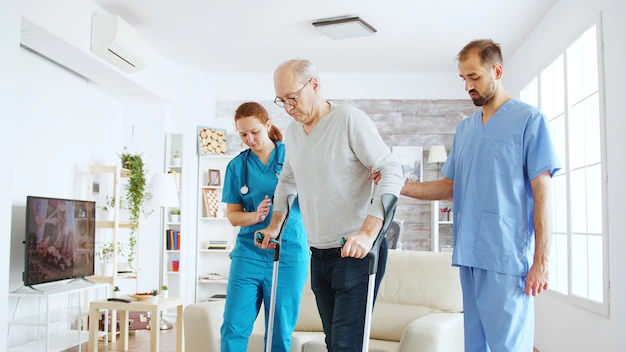Stroke Rehabilitation

Stroke rehabilitation is a process aimed at helping stroke survivors relearn the skills that they lost due to brain damage caused by stroke. The goal of rehabilitation is to improve function and quality of life for stroke survivors. The rehabilitation process can vary widely depending on the severity of the stroke and the specific needs of the individual.
Rehabilitation may begin as soon as the person’s medical condition is stable, and it may continue for several months or even years. The rehabilitation team typically includes doctors, nurses, physical therapists, occupational therapists, speech therapists, and other healthcare professionals who work together to develop an individualized rehabilitation plan for the stroke survivor.
Physical therapy is a key component of stroke rehabilitation. It focuses on improving the strength, flexibility, balance, and coordination of the affected limbs and body parts. Occupational therapy is another important aspect of stroke rehabilitation. It focuses on helping the stroke survivor regain the ability to perform daily activities, such as dressing, grooming, and eating.
Speech therapy is also a critical part of stroke rehabilitation. It focuses on helping the stroke survivor regain the ability to speak, understand, read, and write. Depending on the severity of the stroke, the person may need to relearn these skills or learn new ways of communicating.
In addition to these therapies, stroke survivors may also benefit from psychological counseling to help them cope with the emotional and psychological effects of stroke. This may include individual or group counseling, support groups, or other types of therapy.
Rehabilitation can be challenging, and progress may be slow. However, with a dedicated team of healthcare professionals and the support of family and friends, stroke survivors can make significant improvements in their function and quality of life.
